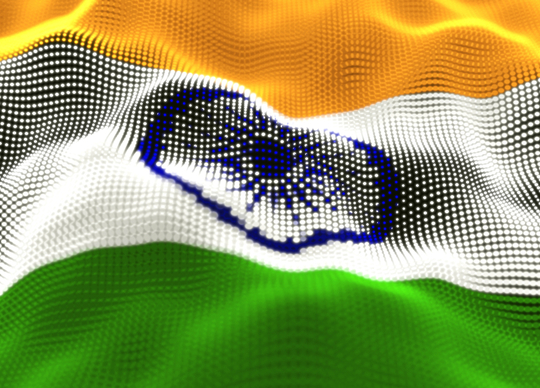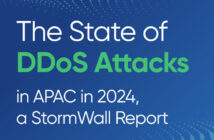
By Sarosh Bana, Mumbai Correspondent.
Arch enemies India and Pakistan require little provocation for turning on each other. Yet, a stunning precedent was set when Pakistan was reported to have launched an estimated 490,000 cyberattacks against India during the T20 World Cup match between their men’s cricket teams on 24 October.
Bengaluru-based telecom analytics firm Subex Secure that was rebranded as Sectrio in September uploaded a blog post the day after India lost the match to Pakistan by 10 wickets in Dubai, that mentioned that while it was common for cyberattacks to surge in times of geopolitical disputes, this was “the first time such cyberattacks have been linked to a sporting event involving teams from the sub-continent”.
While this may be true in the case of cyberattacks, this writer was informed by Indian soldiers on a past visit to the border areas in the frontier state of Jammu and Kashmir (J&K) that they habitually face volleys of bullets fired from across the valley whenever there is a sporting event between the two countries and regardless of the outcome.
Both the nuclear armed neighbours have had a festering border dispute since their independence from Britain in 1947. This internecine problem has led to four wars between them, at the time of Partition in 1947, and in 1965, 1971 and 1999. Three of these wars were waged over J&K, while that of 1971 engendered Bangladesh from the fall of East Pakistan. A 3,323-km separates the two adversaries.
Nationalists and hackers from both sides have been pursuing cyber warfare against each other for criminal objectives like spying or for undermining each other’s countries by compromising their public service systems. Each country also holds the other responsible for the attacks and for sponsoring cyber terrorism.
Participating in a session on Building Back Together – Open Societies and Economies at the G7 Summit in June, India’s Prime Minister Narendra Modi underscored the need to ensure that cyberspace remains an avenue for advancing, and not subverting, democratic values. Sharing the concerns of world leaders about the vulnerability of open societies to disinformation and cyber-attacks, Modi, without naming either Pakistan or China, noted that cyberspace was being increasingly used by terrorists around the world to broaden their appeal, spread virulent propaganda, incite hatred and violence, recruit youth, and raise funds. The participating leaders adopted the ‘Open Societies Statement’ at the end of the session.
Again in June at the United Nations Security Council (UNSC) virtual Open Debate on Maintenance of International Peace and Security: Cyber Security, India raised concerns about cross-border state-sponsored cyberattacks. Without naming Pakistan or China, India’s Foreign Secretary Harsh Shringla spoke out against the country’s neighbours that are increasingly posing threats in the cyber sphere. “Some states are leveraging their expertise in cyberspace to achieve their political and security-related objectives, and indulge in contemporary forms of cross-border terrorism,” he said. “The world is already witnessing the use of cyber tools to compromise state security through, inter alia, attacking critical national infrastructure, including health and energy facilities, and even disrupting social harmony through radicalisation.”
“Open societies” have been “particularly vulnerable” to cyber-attacks and disinformation campaigns, as opposed to states like China that control all forms of online communication, Shringla maintained. “The borderless nature of cyberspace and, more importantly, the anonymity of actors involved have challenged the traditionally accepted concepts of sovereignty, jurisdiction and privacy,” he remarked.
Like India, many other countries have been the victims of nefarious acts of state as well as non-state actors who thereby create an atmosphere of mistrust and distrust. State-sponsored terrorists have been exploiting the cyber domain more strategically, undermining trust and confidence in the global ICT supply chain by compromising security and queering relations between states. Affected countries are finding that they cannot work in isolation and need to adopt a more collaborative rules-based approach in cyberspace for working towards ensuring its openness, stability and security.
A completely partisan report of June 2020, titled Cyber Warfare between Pakistan and India: Implications for the Region, authored by Pakistani academics, Dr. Ghulam Mustafa, Zainab Murtaza and Khadija Murtaza, mentioned that a group sponsored by India’s international intelligence agency, Research and Analysis Wing, or RAW, was “caught” at Karachi University in March that year while trying to fuel “terrorist and propagation activities against Pakistan”. They also point to Advanced Persistent Threats (APTs) from India, APTs being attack campaigns in which an intruder, or team of intruders, establishes an illicit long-term presence on a network in order to mine highly sensitive data. The report adds that APTs use techniques like spear phishing for gaining control of adversarial networks, which they subsequently infect with malware for espionage.
In its report on the cyberattacks from Pakistan, Sectrio traced them to four state-backed hacker groups in that country, in addition to some independent hackers. It also found “a few IP addresses from South East Asia and Eastern Europe” to be participating in these attacks on India. Sectrio, however, linked these IP addresses to botnets that are known to be for hire and which can be purchased by anyone in any country to launch such attacks. A botnet is a network of “hijacked computer devices” that can be used to carry out scams and cyberattacks.
An assessment of cyber power in 15 countries by the International Institute for Strategic Studies (IISS), the London-based research institute in the area of international affairs, indicates that India’s cyber-intelligence and offensive cyber capabilities are regionally focused, principally on Pakistan. It adds that India is striving to build new capabilities in this field, with the collaboration of international partners like the US, the UK and France, to help it address the cyber threats held out by China as well.
The report explained that the on-going military confrontation between India and China in India’s Ladakh border region that has seen a simultaneous increase in Chinese activity against Indian networks “has heightened Indian concerns about cyber security, not least in systems supplied by China”.
India would be hardpressed to deal with cyber hostilities executed in tandem by both Pakistan and China.






